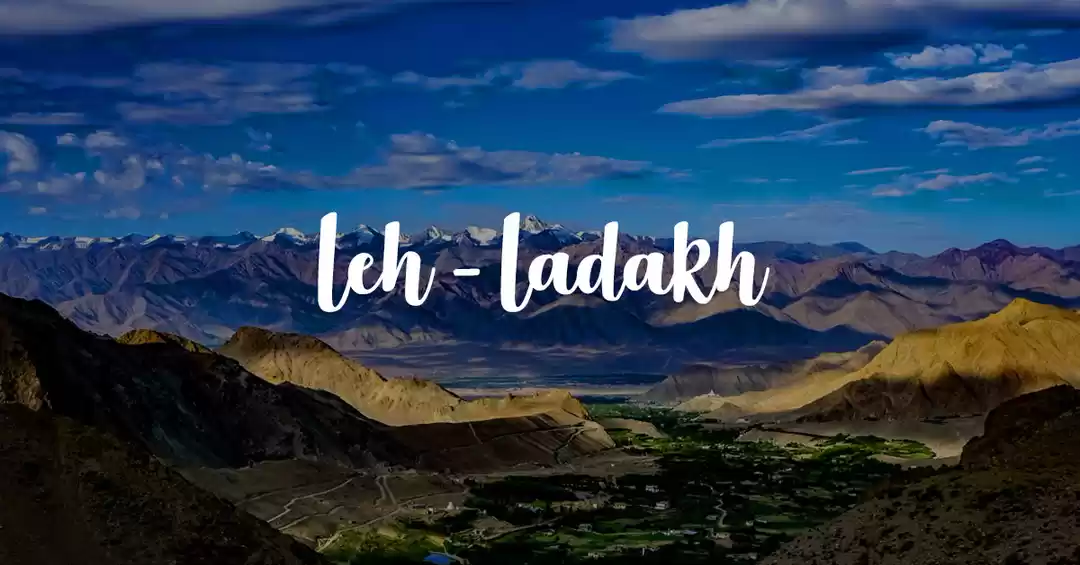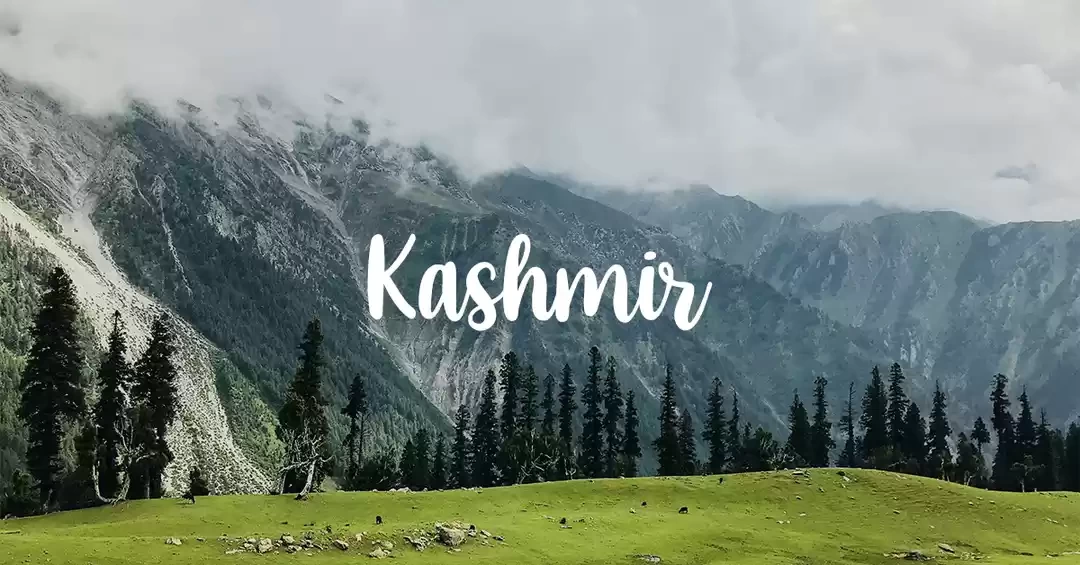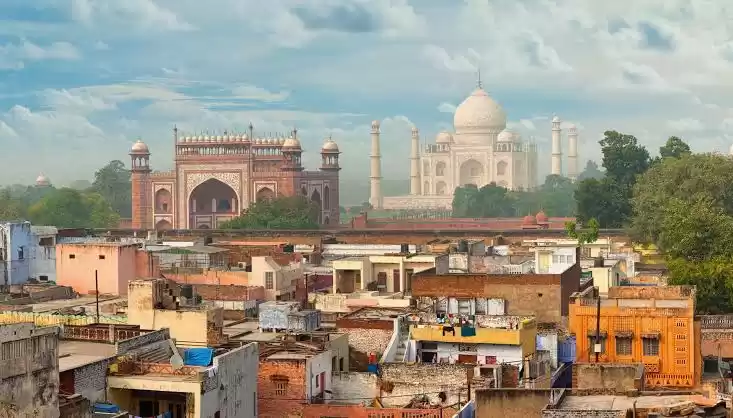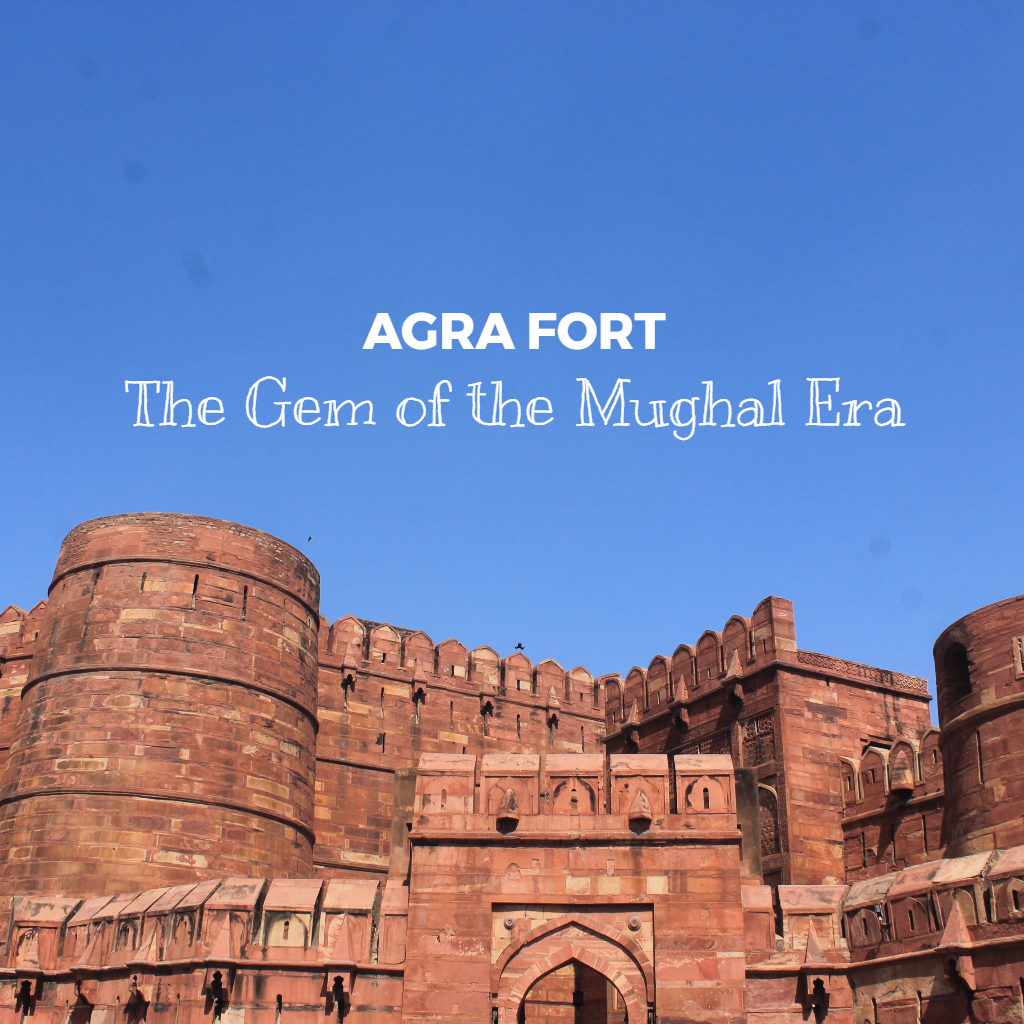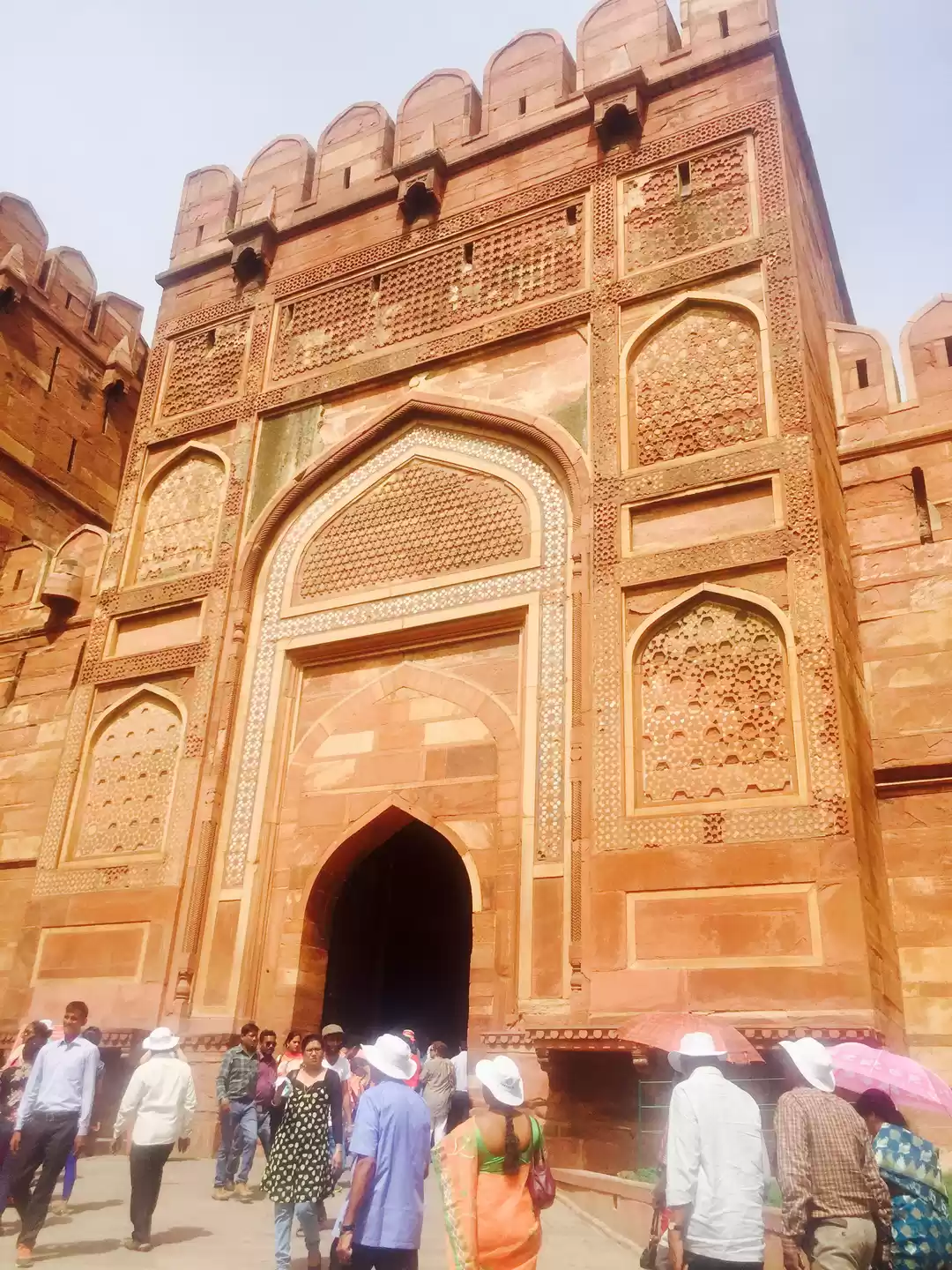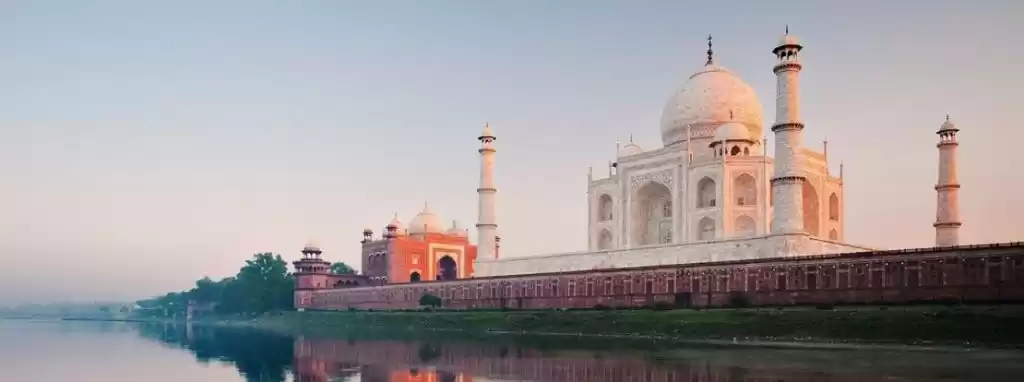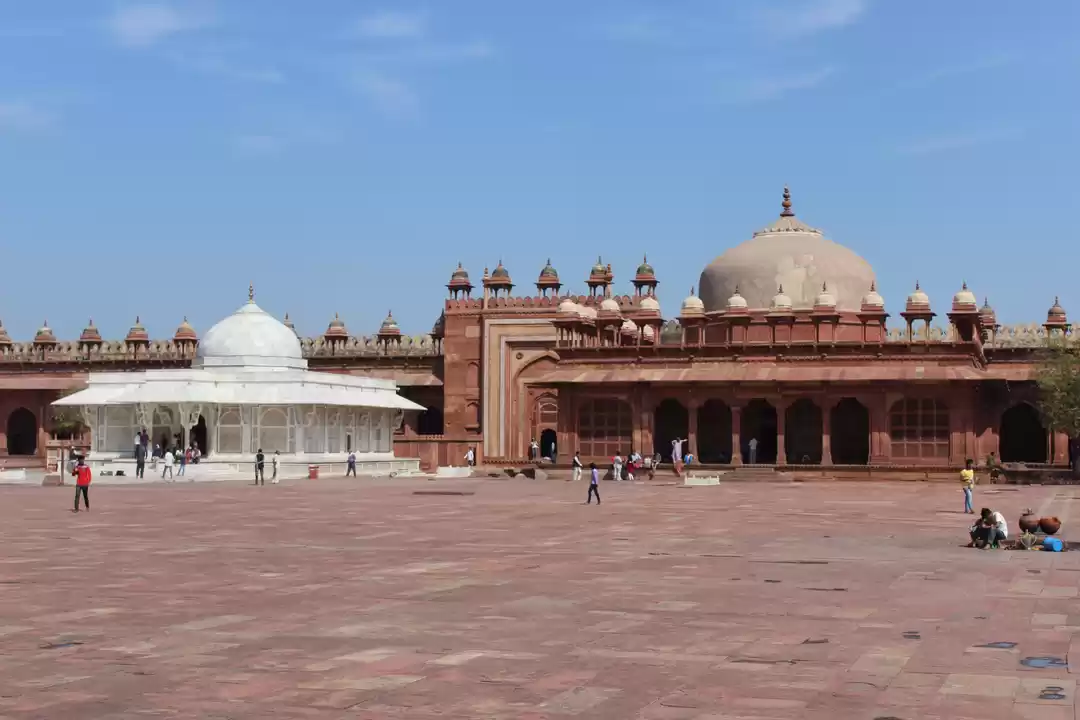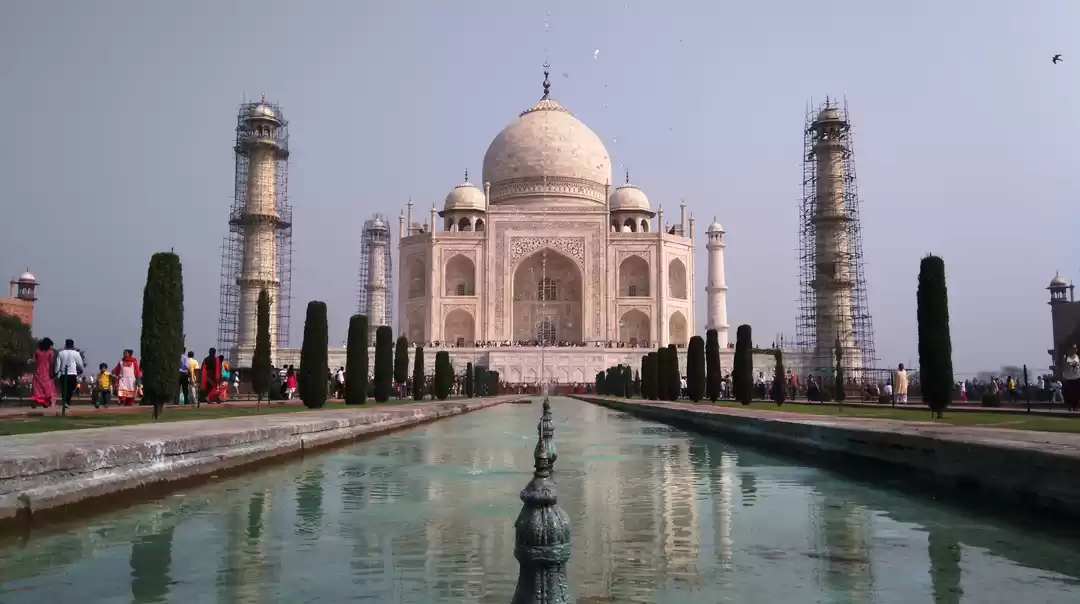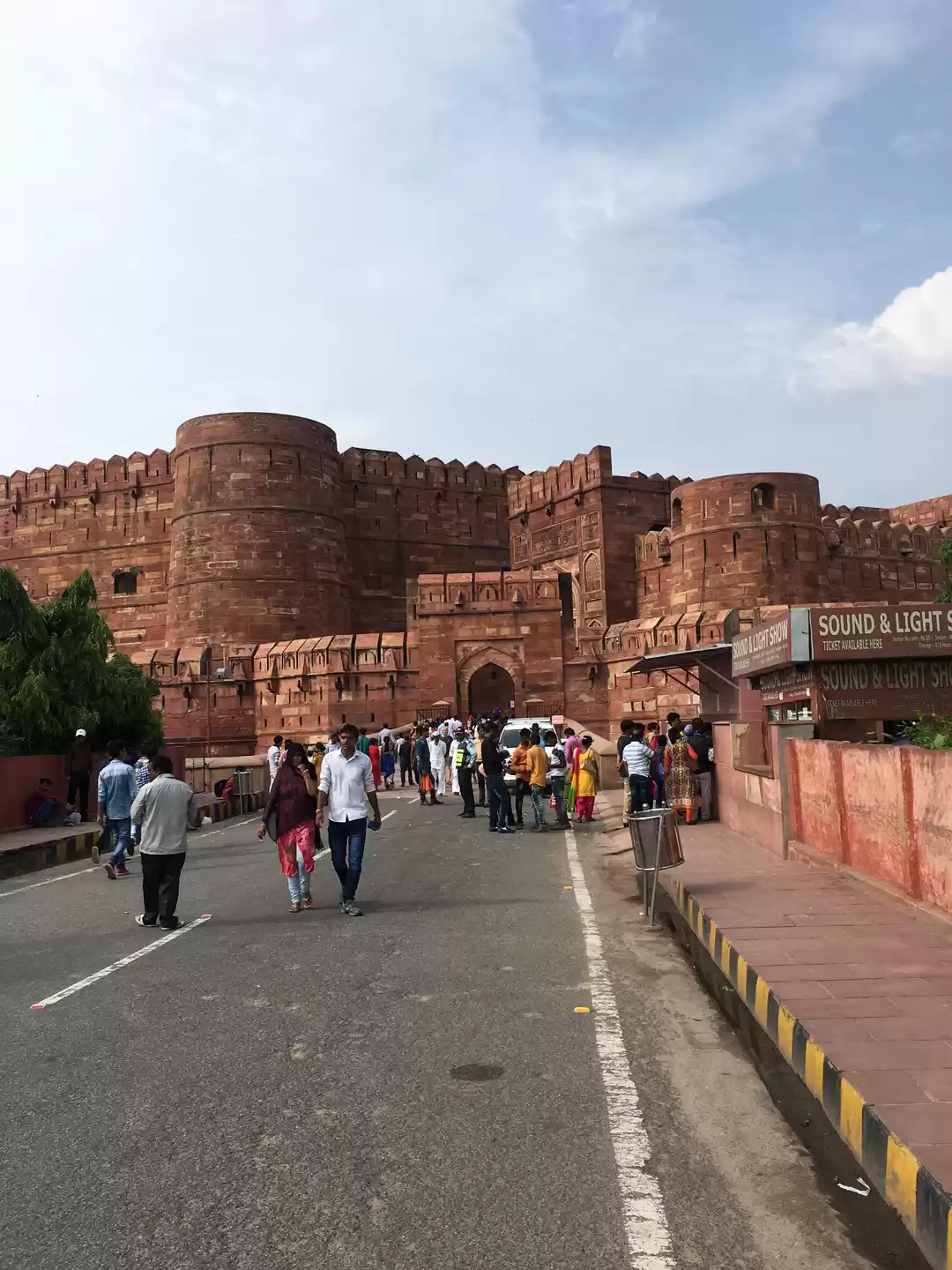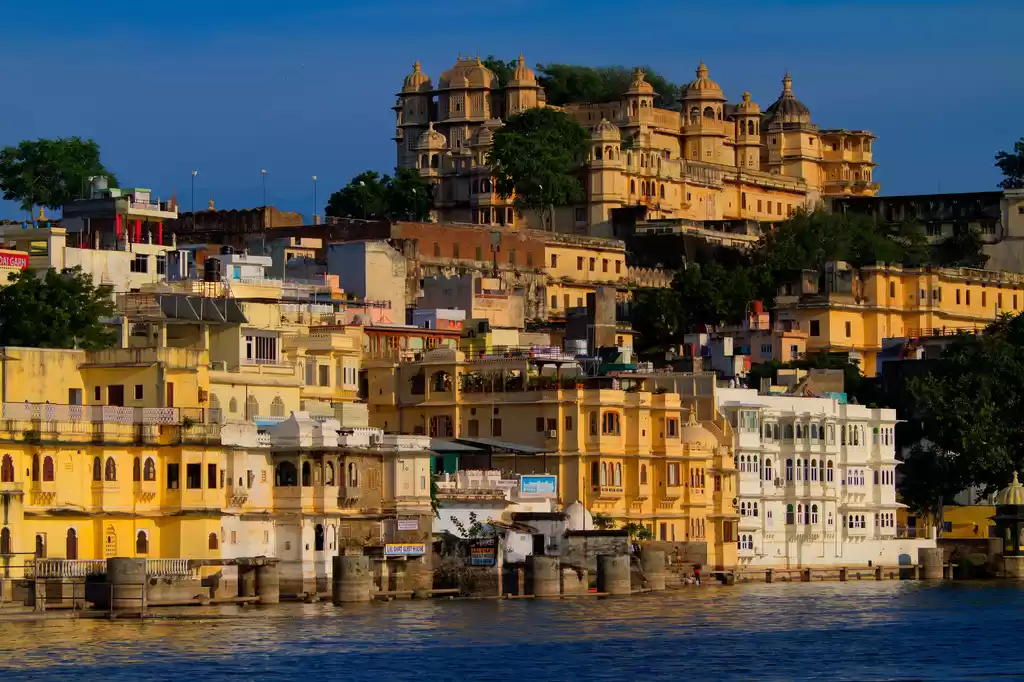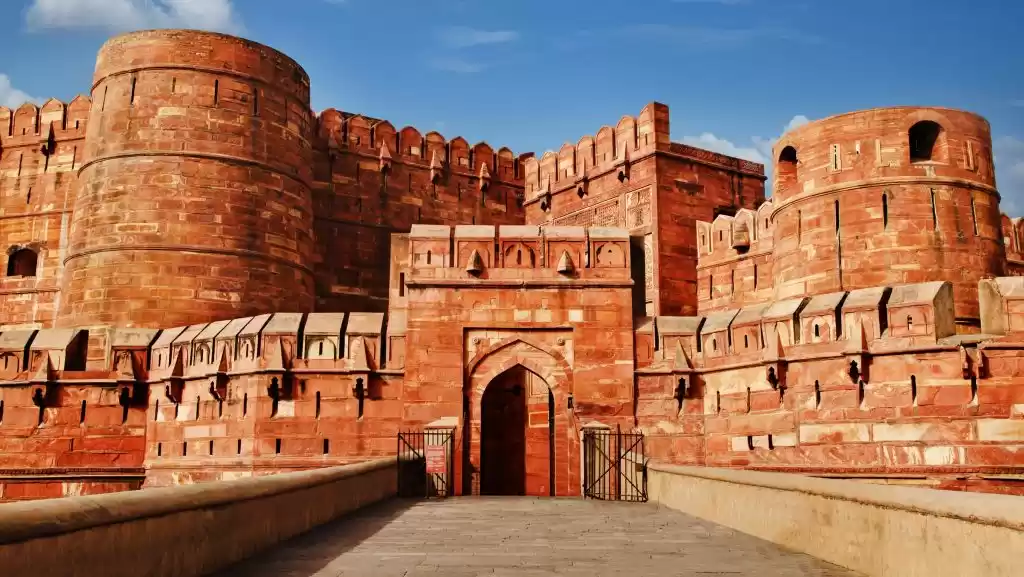
The overshadowed sibling: Being built in the historical city of Agra can be considered both a boon and bane for the magnificent Agra Fort. Located in the heart of what is called the Golden Tourist Triangle (Delhi, Agra, Jaipur), while on the one hand it is easily accessible to tourists, it is also overshadowed by its more famous sibling, the Taj Mahal, despite being a UNESCO world heritage site itself. Located at a distance of about 2.5 kms from the Taj Mahal, the Agra fort is spread over 94 acres along the banks of the river Yamuna. Owing to the Agra fort to Taj Mahal distance being very less, the Agra fort is frequented by tourists visiting the Taj Mahal. Stretching for almost 2.5 kms along the river, this massive fort is widely considered to be one of the finest monuments from the Mughal era.

Picture Credit: Sarangib
The historic legacy of the fort: Spanning centuries, Agra fort’s history can be traced through the multiple hands it passed through. Though it is often assumed that it was Emperor Akbar who built the Agra Fort, it is often forgotten that it was reconstructed on the site of a brick fort that existed since at least the 11th century. The fort was further expanded to include several palaces, wells, and a mosque when Sikander Lodi, the Sultan of Delhi shifted his capital to Agra. Following the fall of the Lodis in the first battle of Panipat, the fort fell into the hands of Babur, who further expanded it by building a baoli (step well). However, following Humayun’s defeat, first to Sher Shah Suri and then to Hem Chandra Vikramaditya, the fort changed hands multiple times, until it went back to Mughal hands after Akbar’s victory in the second battle of Panipat. Akbar then had the original brick structure rebuilt with red sandstone. Shah Jahan however, who was more fond of white marble, had some of the buildings in the fort replaced by marble ones, in one of whose balconies, he breathed his last. So while Akbar and Shah Jahan can be credited with building the fort in its current state, the fort’s construction history can be traced back to multiple rulers.

Picture Credit: Sarangib
How to reach the Agra fort: Located at a distance of 220 kms from Delhi, Agra can be reached by bus, cab, or train in around 3.5-4 hours. The fort can be reached from both the bus stand and the railway station in less than 15 minutes.
Agra fort timings: The fort remains open from sunrise to sunset
Best time to visit: Keeping in mind the soaring summer temperatures in Agra, the best time to visit would be between September and March. However, since most tourists choose this season to visit the historic city, it gets quite crowded. So people who are averse to crowds can visit the fort during summer evenings and be mesmerized by the view of the sunset over the massive fort.
You may also like to read: chapora fort, jal mahal, nahargarh fort, lal mahal pune, thirumalai nayakar mahal





